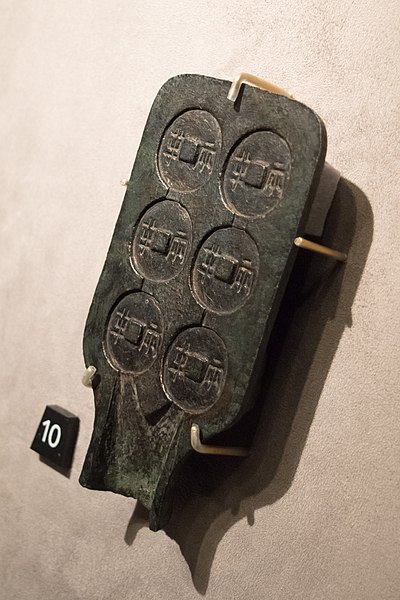Kangxi Tongbao refers to an inscription used on Chinese cash coins produced during the reign of the Kangxi Emperor of the Manchu-led Qing dynasty. Under the Kangxi Emperor the weights and standards of the brass cash coins changed several times and the bimetallic system of Qing dynasty coinage was established. Today Kangxi Tongbao cash coins are commonly used as charms and amulets where different forms of superstition have developed arounds its mint marks and calligraphy.
A Kangxi Tongbao (康熙通寶) charm or amulet.
The cash or qian was a type of coin of China and the Sinosphere, used from the 4th century BC until the 20th century AD, characterised by their round outer shape and a square center hole. Originally cast during the Warring States period, these coins continued to be used for the entirety of Imperial China. The last Chinese cash coins were cast in the first year of the Republic of China. Generally most cash coins were made from copper or bronze alloys, with iron, lead, and zinc coins occasionally used less often throughout Chinese history. Rare silver and gold cash coins were also produced. During most of their production, cash coins were cast, but during the late Qing dynasty, machine-struck cash coins began to be made. As the cash coins produced over Chinese history were similar, thousand year old cash coins produced during the Northern Song dynasty continued to circulate as valid currency well into the early twentieth century.

Replicas of various ancient to 19th century cast cash coins in various metals found in China, Korea and Japan.
Cash coins minted between 330 BC and 1912 AD.
Various cash coins issued during the early Republic of China.
Bronze mould for minting Ban Liang coins, the mould was used during the Warring States period (475–221 BC) by the State of Qin, from an excavation in Qishan County, Baoji, Shaanxi province.





